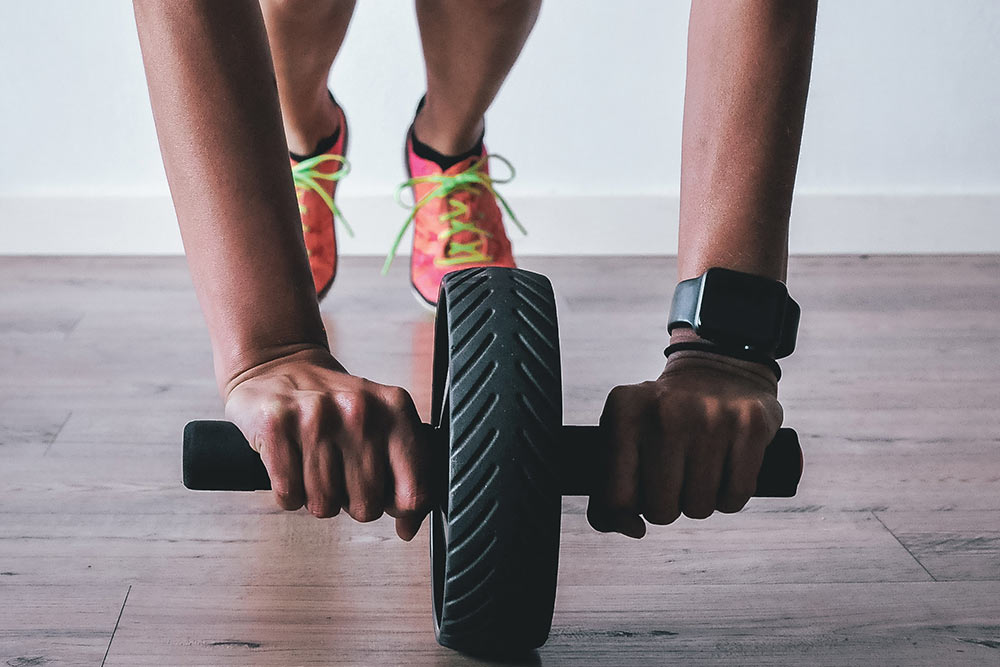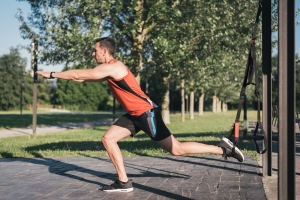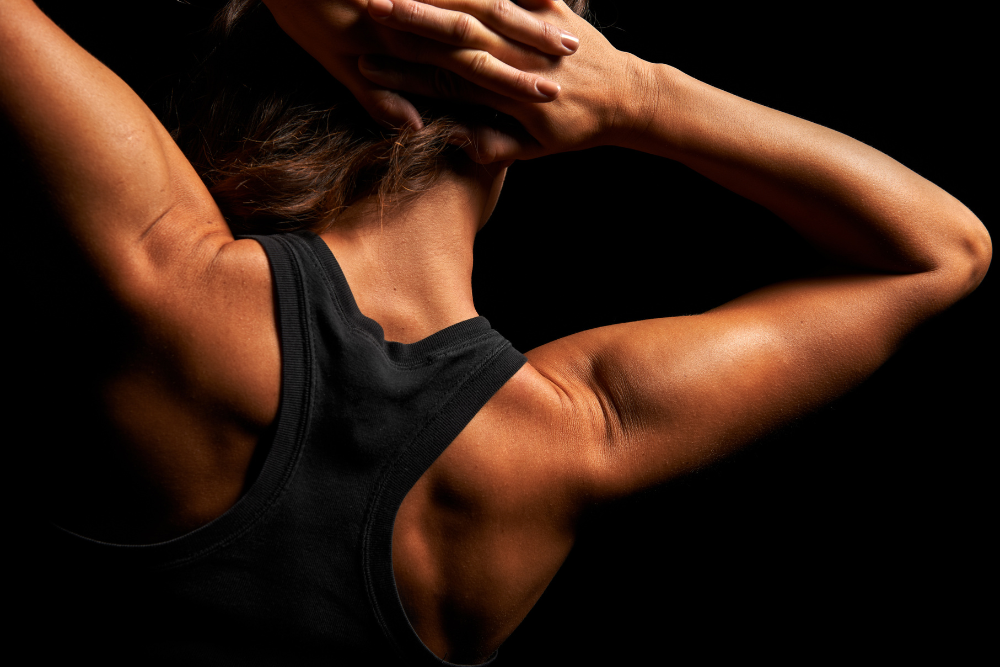How Core Strength Effects Athletic Performance

Alyssa Bialowas
What is Core Strength?
Your core is a complex series of muscles that extend far beyond your abs and is incorporated in almost every movement of the human body. Strong core muscles act as isometric or dynamic stabilizers for movement; transfers force and can initiate movement on its own.
Why is Core Strength Important?
An athlete’s core is involved in almost every sports action. Core muscles are responsible for stabilizing the spine and pelvis, as well as for generating the energy that is transferred from the core and center of the body to its extremities. It is thought that a strong and stable core is crucial for athletic performance, which brings us an overview of the early research on core function.
Early Research on the Relationship Between Core Strength and Athletic Performance
Core strength and power production are believed to provide a foundation for speed, ergo athletic performance in particular sports. Dawes et al. (2016) set out to determine the relationship of change of direction speed, acceleration, and velocity, to the countermovement jump and the squat jump in collegiate soccer players. 20 males and 16 males participated in this study, all Division II NCAA soccer players. They were tested for speed in 10 and 30-meter sprint tests, for agility in the pro-agility shuttle (on “go”, sprint 5 yards to the right, touch a line and  immediately sprint to the left, and then forwards to the start line), and power in the squat jump and countermovement jump test.
immediately sprint to the left, and then forwards to the start line), and power in the squat jump and countermovement jump test.
Gender Differences in Results
Dawes et al. (2016) found that female subjects displayed moderate-to-strong correlations between the 30-meter sprint and the pro agility test with the countermovement jump test and squat jump. Only moderate correlations were observed for males in the same tests. Overall, female subjects displayed strong correlations in a change of direction speed tests, whereas male subjects did not.
Related Article: 4 Stages of Core Training for Lower Back Pain
Why Gender Differences Matter
The results from this study indicate that training will differ for female and male athletes in the pursuit of increasing speed for athletic performance. Training programs designed for female athletes should include a series of core strengthening exercises, in particular, squat jumps, and countermovement jumps to increase speed, agility, and athletic performance.
2016 Study Overview
Imai & Kaneoka (2016) investigated the relationship between trunk endurance plank tests and athletic performance tests, using the prone plank test and side plank test. The investigation included whether there is a relationship between long-distance running and trunk endurance plank tests in adolescent male soccer players.
Findings
Fifty-five male adolescent soccer players participated in this study. The players performed side and prone plank tests and seven performance tests that incorporated a full spectrum of bodily movements; for example a rebound jump test; the step 50 agility test; a 30-meter sprint test, a standing five-set jump; a vertical countermovement jump test; and a beep test.
Results from this study indicate that trunk strength and endurance are necessary for high scores in the beep test and the agility test. This indicates that trunk strength is a good predictor of athletic endurance and agility in adolescent male soccer players.
Recent Research
The relationship between core stability and dynamic athletic performance has been challenged in recent years, with a call for clarity on whether isolated core exercises or functional loaded exercises are more beneficial for core strength and athletic performance. Examples of isolated core exercises would be sit-ups/crunches, the plank, bicycle crunch, the standing dumbbell side plank, whereas examples of functional loaded exercises would be pull-ups, deadlifts, squats, and the dumbbell torso row. Clark et al. (2018) investigated if a more dynamic, whole body training approach to core strengthening is a better way to study core functionality in sport, and devised a questionnaire to elicit findings.
The questionnaire was sent to a sample of the population working in research and the field of sport, and it revealed that in terms of the types of exercises used for overall core stability, there was strong support for loaded, compound exercises performed upright, compared to moderate support for isolated core stability exercises.
Conclusion on the Research
In the pursuit of a strong core for enhanced athletic performance, current research shows that both male and female athletes should focus on loaded, compound exercises such as squats, deadlifts, and pull-ups, while including isolated core stability exercises such as the plank, and the medicinal ball rotational throw for enhanced results. Early research indicates that female athletes show a strong correlation between squat jumps, countermovement jumps and speed and agility tests, indicating that exercise programs for female athletes should include agility training for improved athletic performance (Dawes et al., 2016).
Core Strength Exercises
Enhance core strength and stability for athletes to improve strength and endurance with the following exercises:
Plank
Plant the hands directly under the shoulders like you’re about to do a push-up. Ground the toes into the floor and squeeze the glutes to stabilize the body. Your legs should be working in the move too; careful not to lock or hyperextend your knees. In a perfect plank, your ankles, hips, and shoulders should be in a straight line.
Neutralize the neck and spine by looking at a spot on the floor about a foot beyond the hands. Your head should be in line with your back.
Hold the position for 20 seconds at first, eventually hold your plank for as long as possible without compromising form or breath. Pro tip: remember to breathe!
Medicine Ball Rotational Throw
Stand with your side several feet away from a wall. Hold a medicine ball with both hands in an athletic stance. Begin by rotating your shoulders away from the wall winding up in preparation for the throw. Immediately reverse direction, turning your shoulders and releasing the ball against the wall as fast as you can.
Receive the ball on the bounce and repeat the exercise for the desired number of repetitions.
Related Article: Breathing Exercises for Health & Performance
Squats
Stand with your feet a little wider than hip width, toes facing forward. Drive your hips back, bending at the knees and ankles and press your knees slightly open as you sit into a squat position while still keeping your heels and toes on the ground, keeping your chest up and shoulders back. Then, strive to reach parallel, meaning that your knees are bent to a 90-degree angle. Press  into your heels and straighten legs to return to a standing upright position.
into your heels and straighten legs to return to a standing upright position.
Ab Roller (not recommended if you have lower back problems or hernias)
Hold the Ab Roller with both hands and kneel on the floor. Place the ab roller on the floor in front of you so that you are on all your hands and knees (as in a kneeling push up position). Slowly roll the ab roller straightforward, stretching your body into a straight position. Tip: Go down as far as you can without touching the floor with your body.
After a pause at the stretched position, start pulling yourself back to the starting position as you breathe out.
Pull Ups
Stand under the bar and grab it with both hands. Your palms should be facing away from you with hands shoulder-width apart. Use a standard overhand grip, wrapping your thumbs around the bar so that they almost meet the tips of your fingers. Hang from the bar, your arms should be fully extended with your core engaged and shoulders back. Initiate the actual pull by squeezing the bar with your hands while engaging the muscles of your upper body and core. Continue to pull until your chin clears the bar.
Deadlifts
Stand with your mid-foot under the barbell, then bend over and grab the bar with a shoulder-width grip. Bend your knees until your shins touch the bar, and then lift your chest up and straighten your lower back. Ensure your spine is neutral and not rounded or hyperextended. Finally, stand up with the weight by driving through your heels, and pull. During the movement, remember to move your entire body upwards at the same time (your butt should not rise faster than your chest, or vice versa), and as you pull, squeeze your glutes!
You Might Like:















